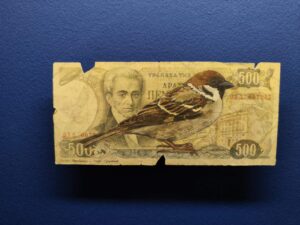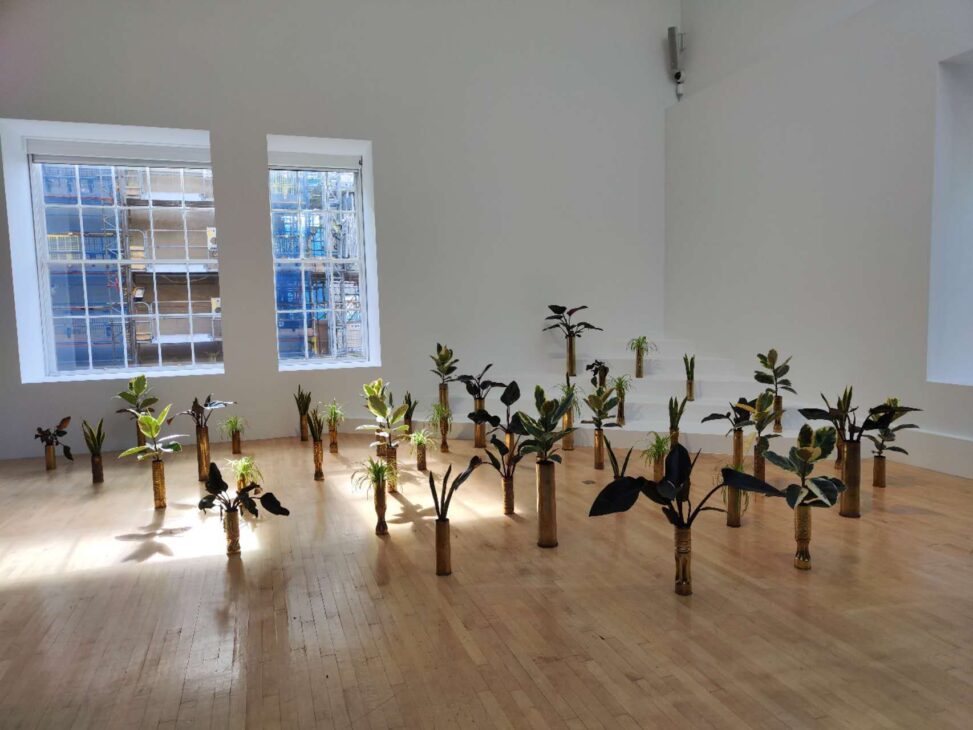We visited the Talbot Rice Gallery again this week. This time, I focused more on looking at the work, and James Clegg explained the curatorial decisions relating to the space and the artist. The theme of the exhibition – The Accursed Share – explored how capitalism has changed our relationship with people and nature.

Sammy Baloji’s Untitled brings 50 copper gun shells into the gallery, all potted with plants from the Katanga region of the Democratic Republic of the Congo. The bronze symbolises the history of African traditions shattered by the desire to establish free trade, and the use of these shells as plantations for bourgeois families exposes and commemorates the deep-rooted injustices that still shape global relations.


Hanna von Goeler focuses on birds. Her drawings of many kinds of birds on the defunct notes are intended to convey that birds are on the front line of an ecological crisis and to reflect on the relationship between human society and nature, suggesting a collective vision of civilisation, national status and values.

Lubaina Himid, ‘Naming the Money’, 2004. Installation close-up view. Courtesy of the artist and Talbot Rice Gallery. Photo: Sally Jubb
Lubaina Himid’s Naming the Money is a number of hand-painted cut-out figures with two names standardised on the back of each cardboard, one of their own and the other given to them by their owners. It tells the story of Europe’s debt to the millions enslaved in centuries past, while foreshadowing a vibrant existence.
The artists’ works express the same inner core and thematic pursuits, and it is the curator’s job to place the works harmoniously in the same space. This exhibition has provided me with a better demonstration of how to arrange multiple artworks in a gallery and integrate the themes. This will serve as a good reference for the process of setting up my exhibition.



Leave a Reply